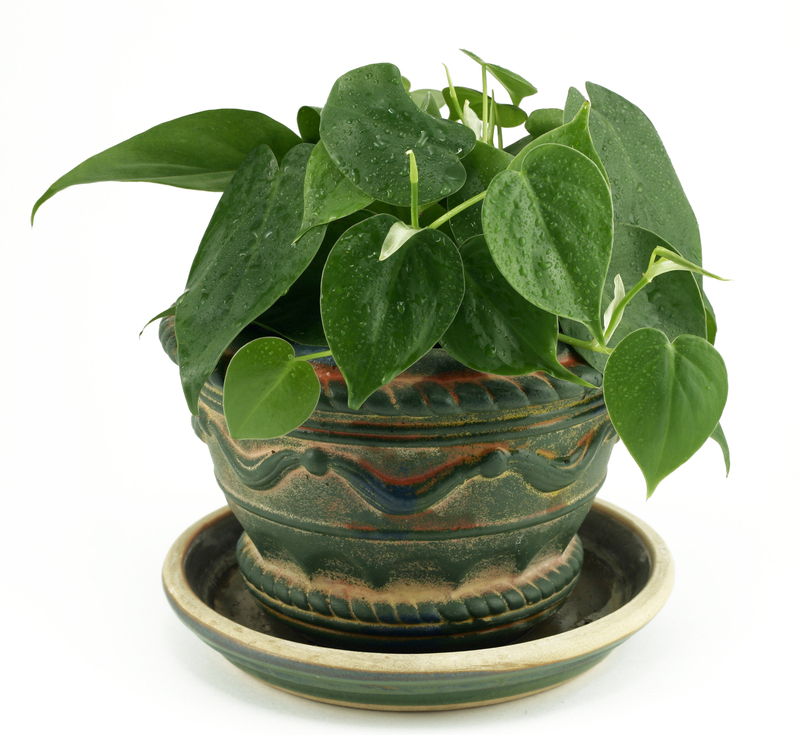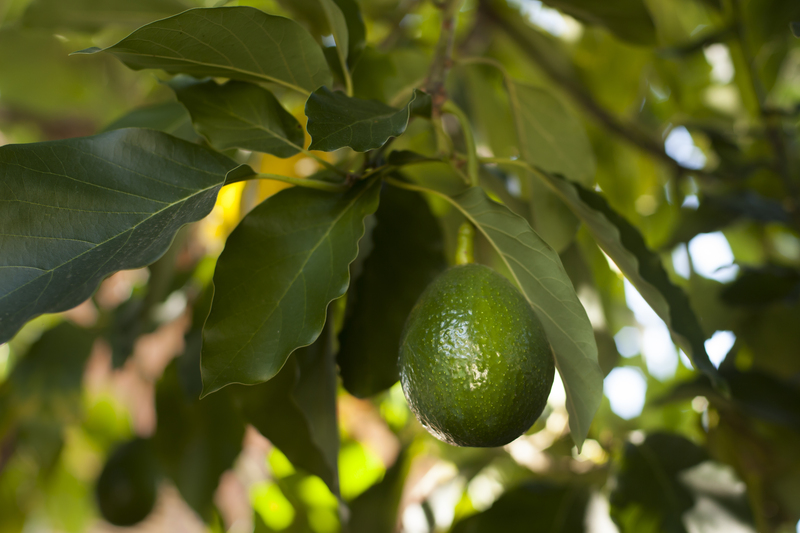Achieve a Pristine Lawn: Three Top Tips for Weed Control
Posted on 06/06/2025
Achieve a Pristine Lawn: Three Top Tips for Weed Control
A lush, pristine lawn is the dream of many homeowners. However, weeds can swiftly invade, undermining your yard's beauty and health. Whether you're a gardening enthusiast or just beginning your lawn care journey, learning effective weed management is crucial. In this comprehensive guide, discover how to achieve a weed-free lawn with three top weed control tips you can start using today.

Understanding Weeds: The First Step to a Beautiful Lawn
Before diving into practical strategies, let's understand what weeds are and why they pose a challenge. Weeds are undesirable plants that compete with your turfgrass for essential resources like sunlight, water, and nutrients. They disrupt the visual appeal and grow vigorously, sometimes even overtaking healthy grass.
Main types of lawn weeds:
- Broadleaf weeds (e.g., dandelions, clover, plantain)
- Grassy weeds (e.g., crabgrass, foxtail, annual bluegrass)
- Sedges (e.g., nutsedge)
Why Weed Control Matters for a Pristine Lawn
Unchecked weed growth doesn't just spoil your yard's uniform look; it can harm grass health, reduce property value, and cause allergy issues for your family. Prompt and consistent weed removal improves turf density, minimizes pest problems, and encourages thicker, greener grass.
- Weeds thrive in weak lawns: Weeds often colonize bare spots and thin turf faster than grass can re-establish.
- Aesthetic impact: Even a few weeds can mar the smooth green expanse homeowners crave.
- Reduced lawn health: Weeds rob grass of nutrients and water, leading to patchy or unhealthy growth.
Three Top Tips to Achieve a Weed-Free Lawn
Let's explore the three most effective strategies for controlling weeds and maintaining a pristine, lush lawn season after season:
Tip 1: Promote Strong, Healthy Grass Growth
The best natural defense against weeds is a robust, dense turf. Healthy grass shades the soil, making it difficult for weed seeds to germinate and take root. Consider these essential lawn care practices:
- Proper Mowing: Avoid cutting your grass too short. Mowing at the recommended height (usually 2.5-4 inches for most species) preserves the grass's energy reserves and shades out weed seedlings. Aim to remove no more than one-third of the grass blade at a time.
- Consistent Watering: Water deeply and infrequently. This encourages deeper root growth and increases turf resilience, making it harder for weeds to establish. Early morning irrigation is best to reduce disease risk.
- Fertilization: Feed your lawn with a balanced fertilizer suited to your grass type. Regular feeding boosts vigor, allowing the grass to outcompete opportunistic weeds.
- Dethatching and Aeration: Thatch buildup and soil compaction create weak spots where weeds thrive. Annual aeration and dethatching foster stronger, thicker grass.
- Overseeding: Fill in thin or bare spots by overseeding. This prevents weeds from colonizing exposed soil and strengthens your lawn's resilience.
Summary: A holistically maintained lawn with proper mowing, watering, feeding, and environmental management naturally crowds out weeds, reducing reliance on chemical herbicides.
Tip 2: Practice Smart Weed Prevention and Early Intervention
Proactive weed prevention stops problems before they get out of control. Early intervention is key to a picture-perfect, weed-free yard.
- Mulching: Apply mulch to garden beds, around trees, and in landscaping areas to block out sunlight and inhibit weed germination. Organic mulch also improves soil health.
- Pre-Emergent Herbicides: These specialized products form a protective barrier in the soil, preventing weed seeds from sprouting. Timing is essential - usually applied in early spring or fall, depending on local weed cycles. Always follow label instructions for safe use.
- Keep Edges Neat: Use edging material or sharp edging tools to prevent creeping grasses and weeds from invading your lawn from adjacent beds.
- Monitor Regularly: Walk your lawn weekly and spot weeds early. Remove them while young and before they set seed to limit future infestations.
- Maintain Clean Equipment: Weeds can hitch a ride on mowers, trimmers, or shoes. Rinse off equipment after working in problem areas to prevent spreading weed seeds.
Summary: By blocking weed establishment and nipping problems in the bud, you minimize future headaches and create a manicured, attractive lawn.
Tip 3: Use Targeted Weed Removal Techniques
Even with the best practices, no lawn is totally immune to weeds. When you spot them, swiftly take action with safe, effective removal approaches.
- Manual Removal: For isolated weeds or small patches, hand-pulling or using a dandelion weeder is often the most effective and environmentally friendly method. Be sure to remove the entire root to prevent regrowth.
- Selective Post-Emergent Herbicides: Choose products labeled for your grass type and the specific weed species present. Spot treat only where needed to minimize chemical use.
- Boiling Water or Natural Solutions: For weeds in hardscape areas, pour boiling water over the unwanted plants. Vinegar or other natural solutions can also be used for non-lawn areas, but take care to avoid desirable grass.
- Reseed After Weed Removal: Each time you eliminate a weed cluster, reseed the area. This ensures the grass fills in quickly, denying weeds a chance to re-invade.
- Manage Persistent Problems: For difficult perennial weeds (e.g., nutsedge, bindweed), repeated targeted treatment or consulting a lawn care professional may be necessary.
Summary: Combine manual, chemical, and cultural controls tailored to the situation for comprehensive weed management and a consistently beautiful, weed-free yard.
Bonus Lawn Weed Control Tips
- Test your soil: Soil tests identify pH and nutrient imbalances that may encourage weed growth. Amending your soil for optimal grass health further tips the scales in your favor.
- Adjust mowing patterns: Switch up your mowing direction each time to encourage upright grass growth and reduce soil compaction.
- Plant the right grass variety: Select grass species and cultivars adapted to your region's climate, sunlight, and traffic. Vigorous, healthy lawns stand up best against weeds.
- Don't neglect shady spots: Shade-tolerant groundcovers or mulch in areas where grass struggles can reduce weed pressures.
Common Myths About Lawn Weed Control
- Mowing eliminates weeds: While regular mowing prevents weeds from seeding, it won't kill established roots.
- More herbicide is better: Overusing chemicals can damage grass and beneficial soil organisms. Spot application is safer and more effective.
- All weeds are bad: Some native wildflowers may be mistaken for weeds but can support pollinator health. Accurate identification is important.
Environmental Considerations for Weed Control
Maintaining a pristine lawn should never come at the cost of harming the environment. Always follow these principles:
- Use chemicals responsibly: Read all product labels and only apply when necessary. Avoid spraying on windy days or ahead of rain.
- Consider organic alternatives: Mulch, hand-weeding, and healthy soil practices offer eco-friendly solutions for weed problems.
- Create buffer zones: Keep chemicals and grass clippings away from waterways to protect aquatic ecosystems.

Frequently Asked Questions on Pristine Lawn Weed Control
- How often should I treat my lawn for weeds? It depends on your region, climate, and weed pressure. A proactive approach each season is best, combining prevention with targeted treatments.
- Is it safe to use herbicides on a lawn with pets and kids? Always read and follow safety instructions. Keep people and pets off treated areas until they are dry and re-entry is permitted.
- Can I control weeds without chemicals? Absolutely. Manual removal, mulching, and strong turf management minimize reliance on herbicides.
Final Thoughts: Enjoy Your Pristine, Weed-Free Lawn All Season
Achieving a pristine lawn free from weeds requires a holistic approach. By following these three top tips--encouraging healthy grass, preventing weed establishment, and practicing targeted removal--you'll enjoy a beautiful landscape all season long. Remember, consistent maintenance is key to turning your yard into the envy of the neighborhood. With the right knowledge and effort, your quest for a lush, weed-free lawn is well within reach!
Take action today, and soon you'll relax on a velvety green carpet--no unsightly weeds in sight.

